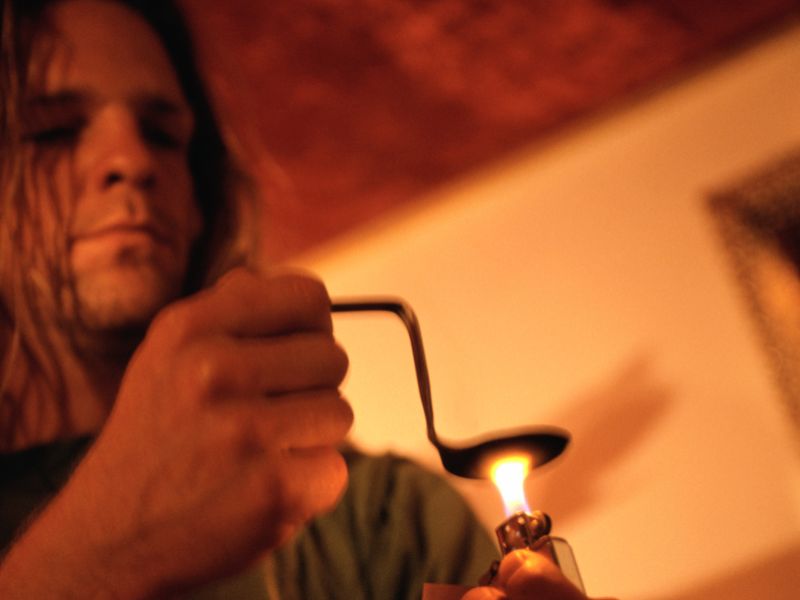
THURSDAY, Nov. 19, 2015 (HealthDay News) — Drug overdose deaths have skyrocketed among teens and young adults in the United States, with rates tripling or quadrupling in one out of every three states, a new report says.
Nationwide, the drug overdose death rate has more than doubled during the past decade among people aged 12 to 25 — rising from 3.1 deaths per 100,000 in 1999-2001 to 7.3 deaths in 2011-2013, according to the Trust for America’s Health report.
These deaths are largely due to the nation’s epidemic of prescription drug abuse, and a subsequent rise in heroin use, said Jeffrey Levi, executive director of the Trust for America’s Health, a non-profit health advocacy group.
“These twin epidemics have contributed to the recent tragic rise in overdose deaths,” Levi said.
The death toll from drug overdose is soaring in specific pockets of the nation. For instance, the rates have:
- More than quadrupled in five states (Kansas, Montana, Ohio, Wisconsin and Wyoming).
- More than tripled in 12 states (Arkansas, Delaware, Indiana, Iowa, Michigan, Minnesota, Missouri, New Hampshire, New York, Oklahoma, Utah and West Virginia).
- More than doubled in 18 states (Alabama, Arizona, California, Colorado, Connecticut, Georgia, Hawaii, Idaho, Illinois, Kentucky, Nebraska, Nevada, New Jersey, New Mexico, North Carolina, Oregon, South Carolina and Tennessee).
West Virginia had the highest rate of drug overdoses, well above the national average, while North Dakota had the lowest. And males were more than twice as likely to die of a drug overdose as females, the report states.
Prescription painkillers, such as OxyContin and Vicodin, were responsible for more than half of all drug overdose deaths in 2013, accounting for 22,700 fatalities, according to the trust’s new Reducing Teen Substance Misuse: What Really Works report.
Many young people who are addicted to prescription drugs wind up switching to heroin because it’s cheaper and often easier to access, the report said. About 45 percent of people who use heroin also are addicted to narcotic painkillers.
Young adults ages 19 to 25 are particularly at risk for a fatal overdose, the report said.
The national overdose death rate for that age group is 12.7 per 100,000, far above the overdose death rate of 1.5 per 100,000 for kids 12 to 18, according to the report.
“That’s across the board,” Levi said. “The jump in rates is dramatic between those two age groups.”
These statistics point to the need for early drug intervention, to prevent kids from being exposed to drugs and potentially becoming addicted, Levi said.
“We have a huge opportunity in kids when they are in school, in their early teen years, so that when they reach this older age they will be less likely to be using,” he said.
The numbers also point to a flaw in current substance abuse policies, said Brian Bumbarger, founding director of the Evidence-based Prevention and Intervention Support Center at Penn State University.
Current anti-drug efforts tend to focus on kids in high school, and with good reason. “More than 90 percent of adults who develop a substance use disorder begin using before they are 18 years old,” said Alexa Eggleston, senior program officer of domestic programs for the Conrad N. Hilton Foundation, which funded the new report.
But it’s when they leave the educational system, and start making life-changing decisions regarding school, career and family, that young adults are at greatest risk to fall deeply into drug abuse, Bumbarger said.
“We lose touch with that population when they don’t go on to higher education or they don’t go on to trade schools,” he said. “They just sort of disappear, and we lose contact with them.”
The report argues that the United States should change its drug strategy to focus on prevention rather than intervening once a person has developed a serious drug problem.
“The real key is to address the root causes and support overall well-being in young people,” Eggleston said.
Other trends noted in the report are more encouraging:
- Underage drinking has declined, with about 35 percent of high school students now reporting they drink compared with 45 percent in 2003.
- Smoking has fallen to historic lows among teenagers, with 5.6 percent reporting they smoked a cigarette within the past month compared to 9 percent in 2009.
[“source-consumer”]